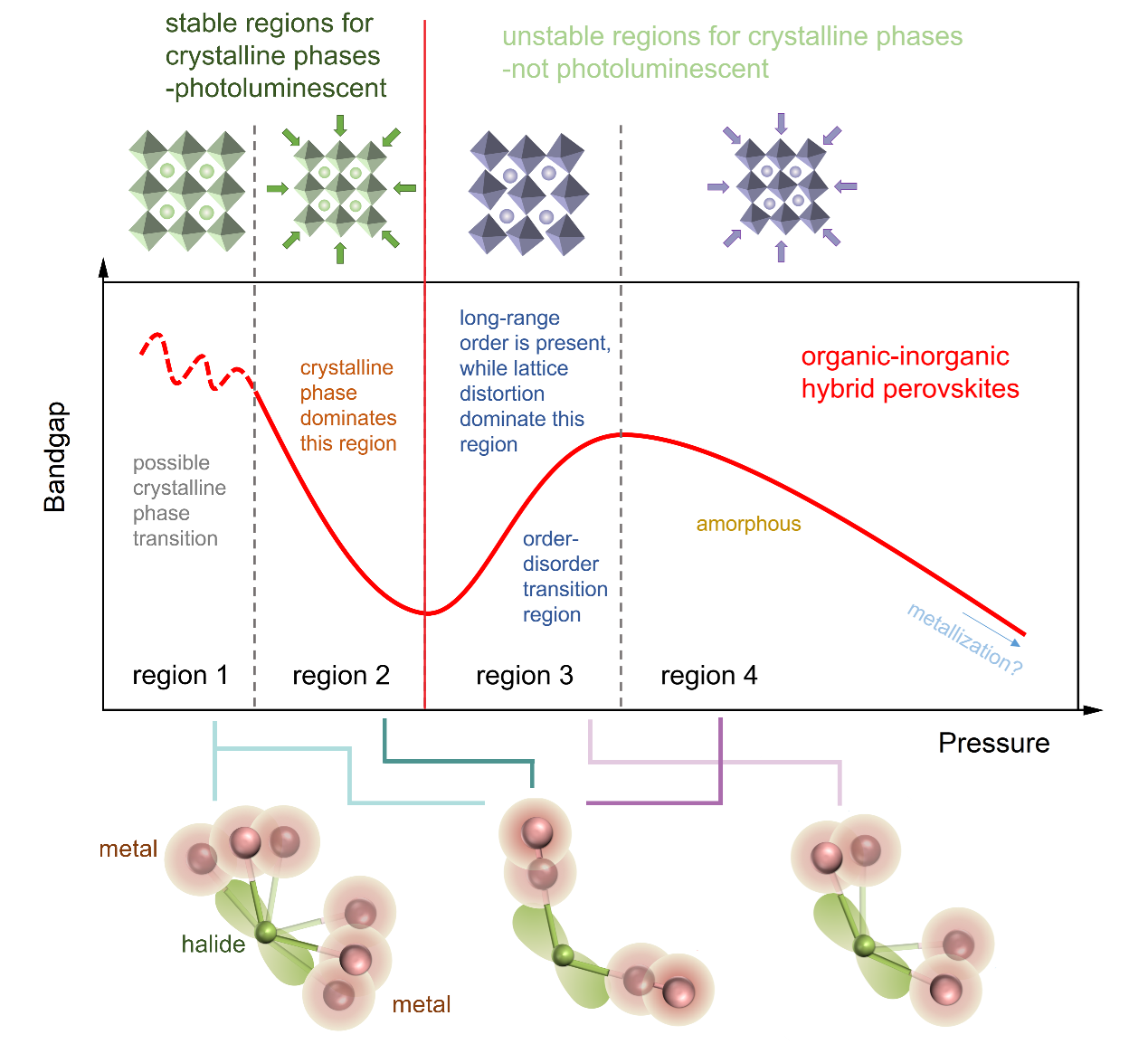
New work from a team of scientists led by Drs. Lingping Kong and Gang Liu from HPSTAR revealed a universal rule of pressure-driven transitions for almost all the reported organic–inorganic hybrid halide perovskites, which can comprehensively describe the relationship among the structural phase, order-disorder state, photoluminescent property, as well as the bandgap evolutions with pressure treatments. The result is published recently in Advanced Functional Materials.
Organic-inorganic hybrid perovskites are universally recognized as a breakthrough and milestone in the photovoltaic field and have guided the design of new materials and devices. These soft materials display rich structure versability and large compressibility, rendering pressure as a novel tool to achieve previously unknown and/or improved physical properties in them. However, a universal pattern is missing that can well describe the pressure-driven evolution of various properties in all perovskite materials assuming 3D, 2D and quasi-2D crystal structures. Such shortcoming renders perovskite research without proper guidance using fundamental principles and has severely hurdled the continual development of their applications in optoelectronics, including PVs, photodetectors, and light-emitting diodes.
Here, the authors performed a closely integrated experimental and computational investigations to solve this long-standing puzzle. According to their results, a framework containing four distinct regions was established (see the Figure), which can comprehensively describe the relationship among the structure and functional response. From the viewpoint of luminant applications, one should focus on regions 1 and 2 for materials manipulation. As such, Kong et al. developed two crucial and measurable parameters, the bandgap tunability and sensitivity, to quantify the response of materials to pressure. These findings help to better understand this material family with various and diverse members for optimizing their optical properties and foundations for more promising optoelectronic applications.
Using such a diagram as an instructional guideline, 2D tin-based (BA)2(MA)Sn2I7 is found to be the softest perovskite material with the largest bandgap tunability known so far. It also remarkably shows irreversible defect healing (carrier lifetime prolongation) and permanent PL enhancement upon decompression back to ambient conditions, signifying the practical value of the universal pressure-driven behavior unveiled in this work.

Caption: A schematic diagram and illustration for hybrid perovskites under high pressures, which can be divided into 4 regions. It highlights the response of the perovskite lattice upon compression and the resultant structural phase, order-disorder state, bandgap, as well the photoluminescent behavior. There are three types of transformations of metal-halide-metal bonds as shown in the bottom of Figure, where green and brown spheres stand for halide (Cl, Br, I) and metal (Sn, Pb) atoms, respectively.
近日,北京高压科学研究中心的孔令平研究员与刘罡研究员带领的研究小组的最新研究揭示了一个适用于钙钛矿材料的普适性的构性关系。此构性关系图像通过四个区域,确定了晶格结构和关键物理性质如带隙、光致发光、有序-无序转变、金属化等的内在关联。使用此模型作为指导,该研究小组揭示了二维锡基钙钛矿的光学带隙和发光演化规则,并通过选择合适的峰值压力,在迄今为止已知的最软的钙钛矿材料(BA)2(MA)Sn2I7中,可以实现永久性的缺陷修复和发光增强。相关结果以“Revealing the Universal Pressure-Driven Behavior of Hybrid Halide Perovskites and Unique Optical Modifiability in Extremely Soft 2D Tin-Based System”为题发表于《Advanced Functional Materials上》。